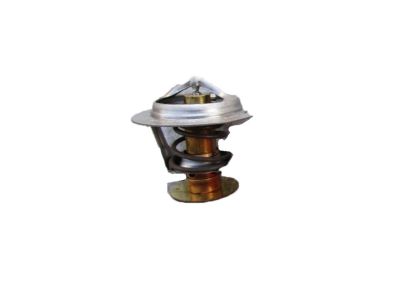×
- Live Chat
- 1-888-788-9341


My Garage
My Account
Cart
Genuine Lincoln Town Car Thermostat
Engine Coolant Thermostat- Select Vehicle by Model
- Select Vehicle by VIN
Select Vehicle by Model
orMake
Model
Year
Select Vehicle by VIN
For the most accurate results, select vehicle by your VIN (Vehicle Identification Number).
2 Thermostats found
Lincoln Town Car Thermostat Assembly
Part Number: 3L3Z-8575-AC$19.81 MSRP: $30.91You Save: $11.10 (36%)Lincoln Town Car Thermostat Assembly
Part Number: F5DZ-8575-A$13.73 MSRP: $15.38You Save: $1.65 (11%)
Lincoln Town Car Thermostat
The Thermostat in Lincoln Town Car vehicles is an important part of the cooling mechanism of the vehicle is located around the radiator to manage the temperature of the engine. Primarily, it is used for cooling the engine to a reasonable level for it can perform well without overheating. A thermostat controls the heating and cooling mechanisms separately to turn on and off and also controls the flow of fluids that transfer heat. Lincoln Town Car thermostats have been of different types and have included the mechanical types such as the bimetallic strips and wax pellet thermostats. Among these thermostats, wax pellet thermostats are most remarkable for their property of expansion and contraction with temperature, to manage engine heat. These evolutions have come up with today's sophisticated integrations to all vehicles for better control of temperature and consequently the operations of the vehicle.
We provide a wide range of Lincoln Town Car Thermostat at the best prices possible. If you need Lincoln Town Car Thermostat, you can shop with confidence on our website. All our OEM parts come with a manufacturer's warranty and are delivered to your door step with a fast delivery service.
Lincoln Town Car Thermostat Parts Questions & Experts Answers
- Q: How to replace a thermostat in a Lincoln Town Car?A: Don't drive the vehicle without a thermostat! The engine may not reach the required temperature for the computer to go into closed loop operation and emissions and fuel economy will suffer. Before condemning the thermostat, check the coolant level, drivebelt tension and temperature gauge (or light) operation. If the engine takes a long time to warm up, the thermostat is probably stuck open. Replace the thermostat. If the engine runs hot, check the temperature of the upper radiator hose. If the hose isn't hot, the thermostat is probably stuck shut. Replace the thermostat. If the upper radiator hose is hot, it means the coolant is circulating and the thermostat is open. If an engine has been overheated, you may find damage such as leaking head gaskets, scuffed pistons and warped or cracked cylinder heads. The same tool that many shops use to check for combustion hydrocarbons in coolant, which indicates a head gasket leak, is available at local auto parts stores. To replace the thermostat, drain coolant from the radiator until the level is below the thermostat housing. On 1998 and later models, remove the plastic cover over the top of the intake system for access to the thermostat. On some models of the OHV engines, it may be necessary to remove the distributor cap in order to remove the thermostat housing. Disconnect the upper radiator hose from the thermostat housing and the bypass hose from the thermostat housing on OHV engines. Remove the vacuum switching valve attached to the thermostat housing and disconnect the vacuum lines before removal. Remove the bolts and lift the cover off, tapping it with a soft face hammer if necessary. Remove the O-ring seal on an OHC engine. Note how it's installed, then remove the thermostat. Use a scraper or putty knife to remove all traces of old gasket material and sealant from the mating surfaces. Install the thermostat with the correct end facing out, directed toward the engine. Apply a thin coat of RTV sealant to both sides of a conventional paper gasket and position it on the engine side, over the thermostat. On models that use an O-ring seal, install the new O-ring into the intake manifold. Carefully position the cover and install the bolts, being careful not to over tighten them. Reattach the radiator hose to the cover and tighten the clamp. Refill the system, then run the engine and check carefully for leaks. Repeat the steps to be sure the repairs corrected the previous problem(s).













